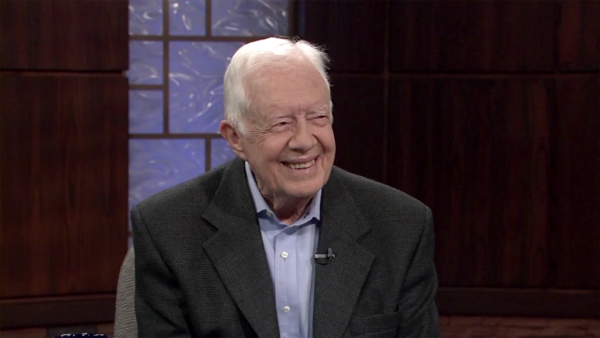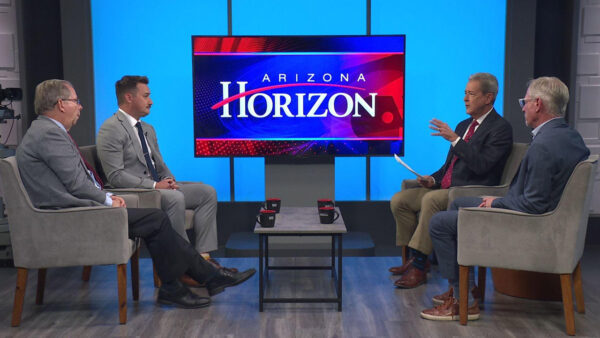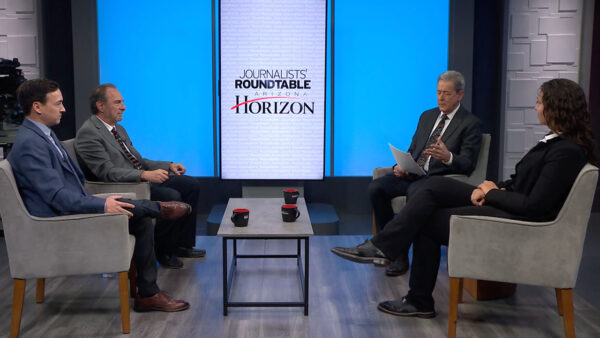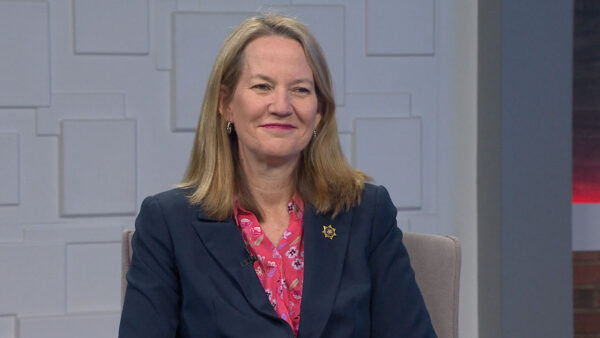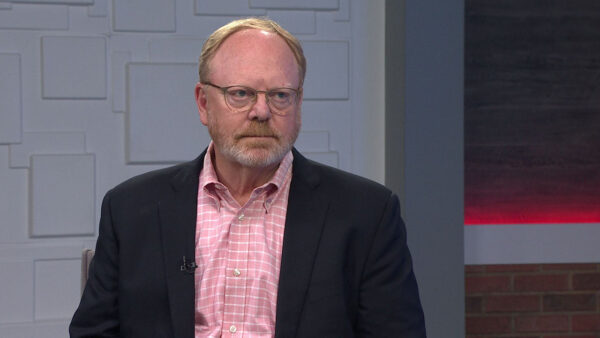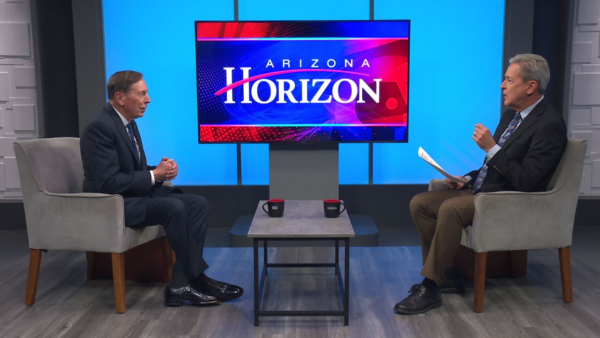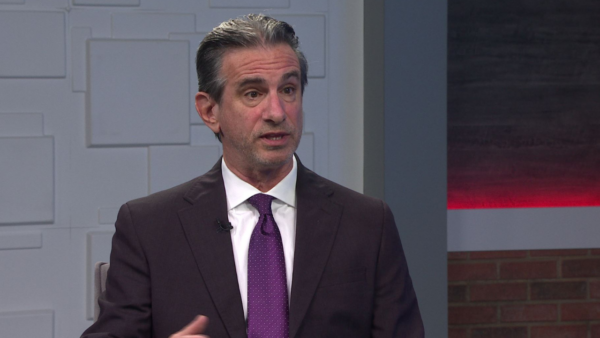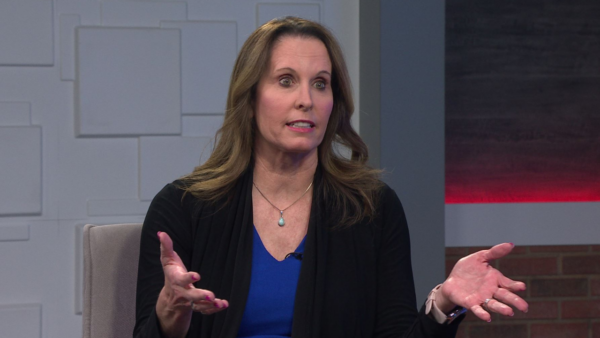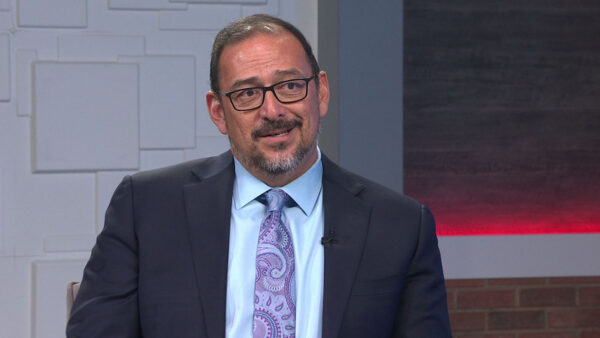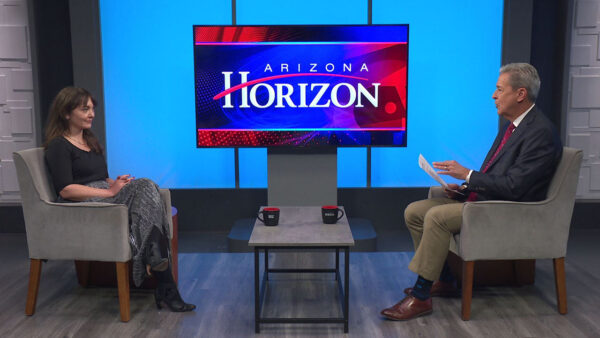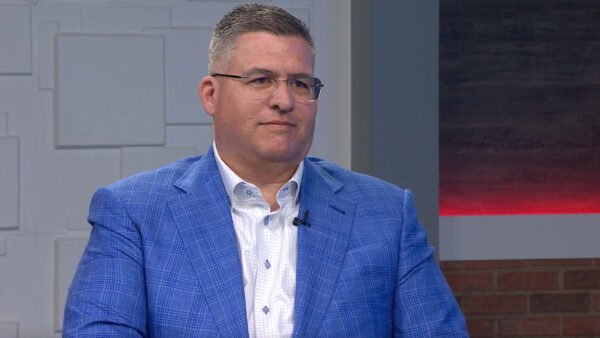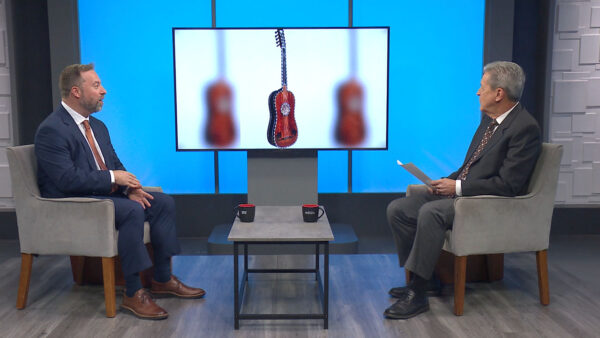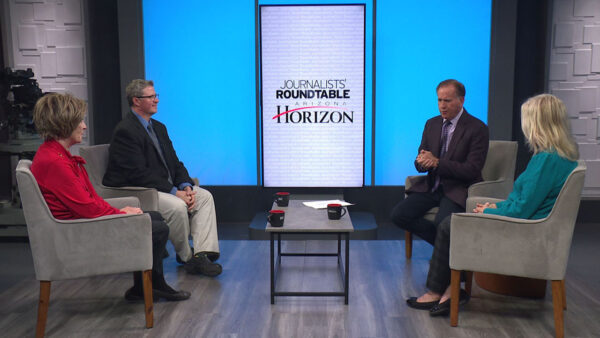The Phoenix Convention Center recently hosted the 8th Annual Border Security Expo. The two-day event attracted law enforcement, policy makers and vendors showing off their latest tools and technology. We’ll go beyond the border and show you how one company’s facial recognition software could soon appear in your favorite store.
Ted Simons: The Phoenix Convention Center recently hosted the eighth annual border security Expo. The two-day event attracted law enforcement officials, policymakers and vendors. Producer Christina Estes and photographer Juan Magana stopped by the exhibit hall where it seemed no move went unnoticed.
Company Official: It offers night vision capability.
Company Official: We do people counting.
Company Official: We are a very slow detection.
Company Official: We count the individuals on a ten-minute increment.
Christina Estes: Among more than companies showing off their latest tools --
Ready? This is called the dragon runner 20.
Christina Estes: It was a small, quiet booth that really caught our eyes.
Kevin Haskin: We are showing the premiere facial recognition software.
Christina Estes: Cognitec systems is a German company with a powerful reach.
Kevin Haskin: It's being used in airports. Around the world. The camera captures your face and is using pattern technology to look at this part of your face. Just above your eyebrow to just above your lip and there's patterns and contours within your face just like a fingerprint.
Christina Estes: From a single image, has since says, they can determine with a degree of certainty, your race, gender and age within about five years. They can verify you are the person on your passport or driver's license or run your face through a watch list or suspect database. When it comes to more challenging pictures --
Kevin Haskin: Running recognition right now we still have enough from the face to come up with a hit. But that's generally not good enough.
Christina Estes: They put a 2-D image into a 3-D to generate facial characteristics.
Kevin Haskin: With that information, we now have a matchup of a suspect at this point.
Christina Estes: They collect location information, too. If a person showing up somewhere more often than usual, Haskins says they can alert police.
Kevin Haskin: We are talking about facial recognition. We are not talking about anything that a human can't do. We're just making it faster, quicker, and more reliable.
Joe Battaglia: This is used to surveil large areas of the border.
Christina Estes: New York-based telephonics already has more than truck-mounted systems along our southern border. This is their latest model.
Joe Battaglia: He's got maps of the local area on his computer. He can expand, he can zoom in on certain areas right down to a street level, to a house level. He can actually see what's going on.
Christina Estes: The mast can reach feet high with cameras that can track people miles away.
Joe Battaglia: We have found that we have numerous international opportunities for this. As you well know there's lots and lots of borders around the world with lots and lots of people that don't like each other.
Christina Estes: For those who don't like the possible invasion of privacy, he says --
Joe Battaglia: You can't have it both ways. You know? We're -- the system is built to defend the people. And in order to do that you have to have knowledge what was going on in the area. And the only way you can do that is through some. Electronic devices that we have.
Christina Estes: In 1996, Swedish company axis communications became the first to release a surveillance camera that could transit data throughout internet.
John Merlino: The way that it's used has to be purposeful. I think -- I don't know that it needs to be regulated. Certainly I wouldn't say it needs to be regulated but it has to be done in a way that respects people's privacy. People can use technology not just cameras, to make their environment safer. They're generally in favor of it.
Christina Estes: Safety is not the only selling point. Retailers are using it to save and make money.
Kevin Haskin: If a shoplifter comes in, security receives the alert. If it's a VIP, cons area or buyer's assistance may receive that notice.
Christina Estes: Businesses also like to break down the demographics so they can figure out who is shopping when and where they are spending the most time.
Kevin Haskin: I was asked, where could you see this in years? I can't tell you where it's going to be in six months. The technology is so evolving and so advancing that with our company and what we are doing, I am amazed six months from now what we are going to be releasing.
Ted Simons: Axis Communications says it likes to partner with young, innovative minds at Universities when researching and developing new technological ideas. Tomorrow on "Arizona Horizon," it's our weekly look at state politics with the "Arizona Capitol Times." And we'll hear about efforts to improve American Indian education. That's tomorrow at 5:30 and 10 on the next "Arizona Horizon." Reminder if you want to check out our website, see previous programming or check out what we have in store for the remainder of the week and month, you might want to check us out at azpbs.org/horizon. That is it for now. I'm Ted Simons. Thank you so much for joining us. You have a great evening.








